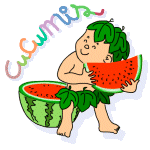Překlad - Dánsky-Anglicky - I gamle dageMomentální stav Překlad
Text je dostupný v následujících jazycích:  
| | | Zdrojový jazyk: Dánsky
I gamle dage |
|
| | | Cílový jazyk: Anglicky
In the past |
|
Naposledy potvrzeno či editováno IanMegill2 - 22 září 2007 15:27
Poslední příspěvek | | | | |
22 září 2007 04:44 | | | Hi Porfyhr,
Why did you vote against this translation?
Your opinion is important to me!  CC: Porfyhr CC: Porfyhr | | |
22 září 2007 06:41 | | | In Scandinavian we say "førrn i tiden" to express "In the old days we had horses and farm." It is a descriptive form.
To translate "I gamle dage" correct I would say "In the past the king had his servants who tasted the kings food to make sure it wasn't poisoned." It is a past tense in a more concrete form. A more old fashioned expression
"I gamle dage" you also lack the important final-r "I gamle dager", if that -r would have been present then it would have been much more descriptive, and more alike the first variety.
It might seem like small variations but that is the difference between a w-b-w translation and a translation.
Hope you feel a little more understanding!
/Porfyhr  | | |
22 září 2007 12:59 | | | Thank you Porfyhr!
Thanks to your explanation, I think I have a good idea of the difference in nuance here between these two!
Such small variations are important to me as a translator, too!  | | |
22 září 2007 15:19 | | | |
|
| 
